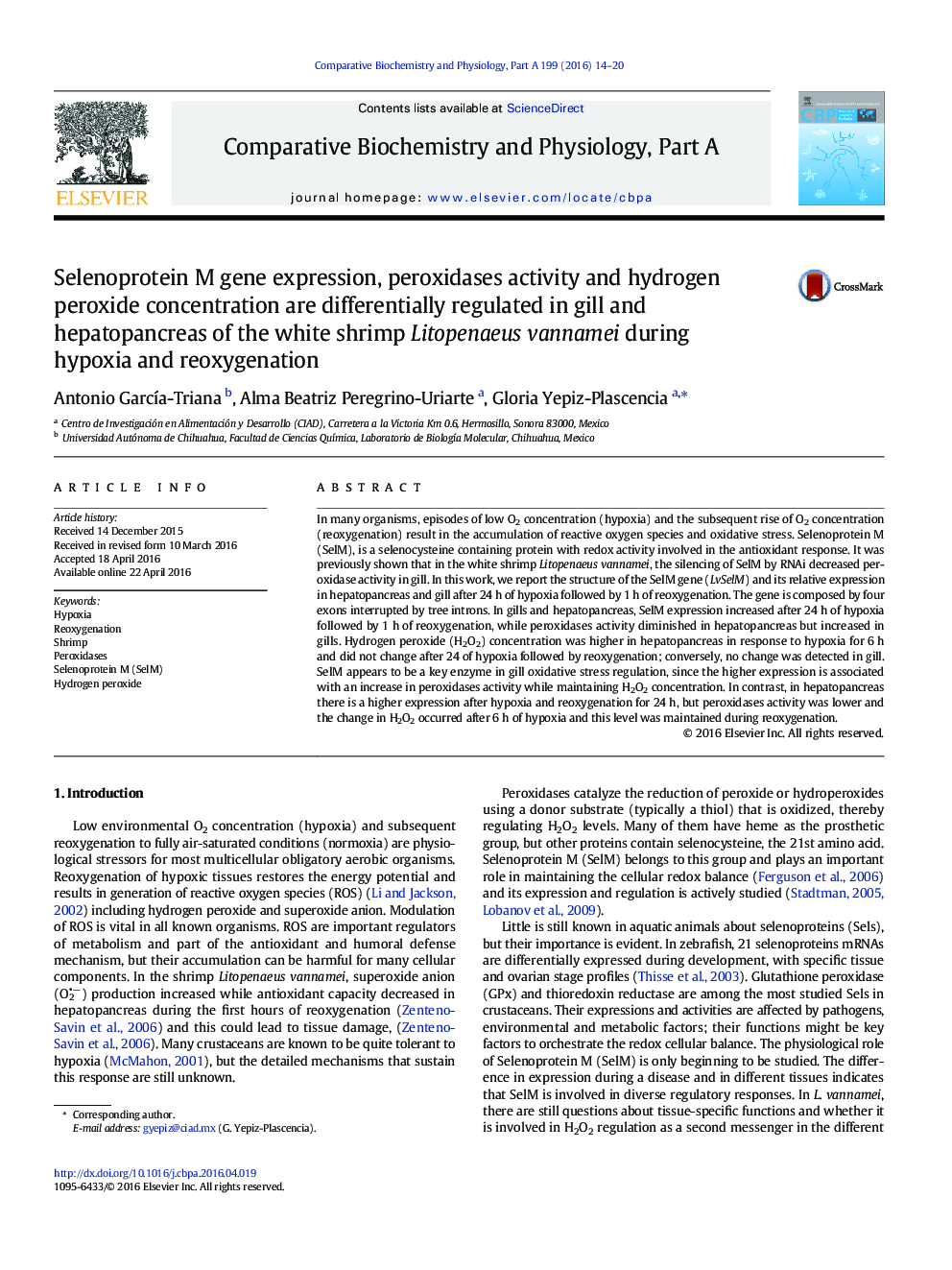| Article ID | Journal | Published Year | Pages | File Type |
|---|---|---|---|---|
| 1971798 | Comparative Biochemistry and Physiology Part A: Molecular & Integrative Physiology | 2016 | 7 Pages |
In many organisms, episodes of low O2 concentration (hypoxia) and the subsequent rise of O2 concentration (reoxygenation) result in the accumulation of reactive oxygen species and oxidative stress. Selenoprotein M (SelM), is a selenocysteine containing protein with redox activity involved in the antioxidant response. It was previously shown that in the white shrimp Litopenaeus vannamei, the silencing of SelM by RNAi decreased peroxidase activity in gill. In this work, we report the structure of the SelM gene (LvSelM) and its relative expression in hepatopancreas and gill after 24 h of hypoxia followed by 1 h of reoxygenation. The gene is composed by four exons interrupted by tree introns. In gills and hepatopancreas, SelM expression increased after 24 h of hypoxia followed by 1 h of reoxygenation, while peroxidases activity diminished in hepatopancreas but increased in gills. Hydrogen peroxide (H2O2) concentration was higher in hepatopancreas in response to hypoxia for 6 h and did not change after 24 of hypoxia followed by reoxygenation; conversely, no change was detected in gill. SelM appears to be a key enzyme in gill oxidative stress regulation, since the higher expression is associated with an increase in peroxidases activity while maintaining H2O2 concentration. In contrast, in hepatopancreas there is a higher expression after hypoxia and reoxygenation for 24 h, but peroxidases activity was lower and the change in H2O2 occurred after 6 h of hypoxia and this level was maintained during reoxygenation.
